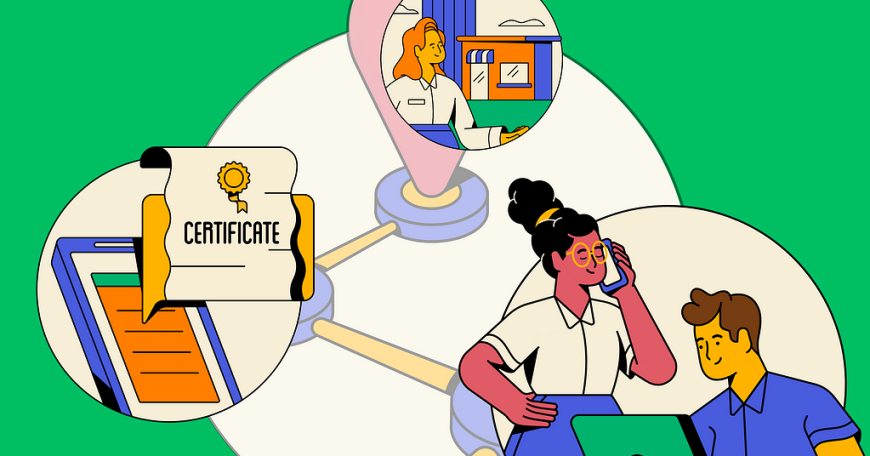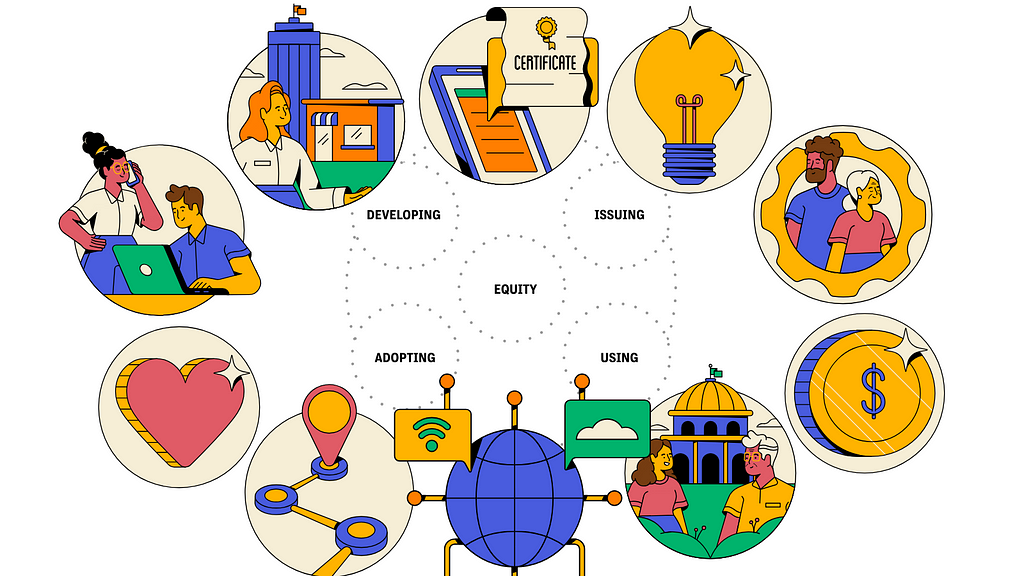
In a skills-based hiring future, digital learning and employment records create equity for…
In a skills-based hiring future, digital learning and employment records create equity for learners and job seekers
Dynamic map of the learning and employment records ecosystem launched by stakeholders in education, workforce development, and state government
By Digital Credentials Consortium
Imagine a world where employers could confirm the education and work experiences on candidates’ resumes in seconds. With verifiable digital learning and employment records (LERs), that’s already possible.
As part of ongoing efforts to advance the adoption of LERs, a group of leading organizations representing education institutions, employers, workforce development, state government, and human resources have launched an interactive map of the LER ecosystem.
The LER Ecosystem Map is a tool designed to define work streams and align key players in the ecosystem towards using LERs to unlock opportunities for all. With support from Walmart, this collaboration also identifies opportunities for strategic action between key players in these sectors.
“LERs place the learners at the center of a dynamic ecosystem, empowering them with the ownership of their own data on skills and achievements.”
LERs are data-driven, digital records that capture a person’s skills as an alternative to traditional resumes. In addition to cataloging educational and professional experiences, these records can also verify informal workforce training, online learning, and other life experiences. LERs are a critical tool for making skills-based hiring a reality. The release of the LER Ecosystem Map will help ensure this new technology is available and applicable to all communities and learners.
The collaborating organizations — which include the Digital Credentials Consortium (DCC), American Association of Collegiate Registrars and Admissions Officers, Competency-Based Education Network, Digital Promise, Jobs For the Future, National Governors Association, Society for Human Resource Management Foundation, and the T3 Innovation Network (an initiative by the U.S. Chamber of Commerce Foundation) — developed the LER Ecosystem Map with the goal of defining key concepts, clarifying work streams, and identifying ways LERs can promote equitable learning and employment pathways.
Explore the LER Ecosystem Map: Driving opportunity and equity
through learning & employment records
Catalyzing collaboration for a more equitable future
The LER Ecosystem Map was created in response to key findings from DCC’s earlier Credentials to Employment: The Last Mile report. DCC, part of MIT Open Learning, is a group of 13 higher education institutions in North America and Europe building an infrastructure to issue, share, and verify digital academic credentials. Published in September 2022, the Credentials to Employment report identifies several barriers to widespread adoption of digital credentials, including:
- few employers seek LERs during the application process;
- human resource management systems need upgrades to integrate this technology; and
- disconnected efforts working on separate parts of the LER ecosystem.
With support from Walmart, the DCC created this report through an analysis of interviews conducted with employers, credentialing vendors, academic institutions, and human resources platforms.
The new ecosystem map helps address the disconnect between LER projects. Collaboration will help accelerate the adoption of digital records to establish a more equal playing field where anyone can access quality education, training, and jobs.
“The LER Ecosystem Map provides a high-level view of the ecosystem of organizations,” says Krishna Rajagopal, William A. M. Burden Professor of Physics at MIT and chair of DCC’s leadership council.

“It is so valuable because it describes actions that each group of stakeholders can take today, and in the future, to drive the adoption of learning and employment records in ways that increase learner agency and economic mobility.”
For the DCC and other technology providers who aim to protect learner data and agency, the LER Ecosystem Map provides useful context on the lifecycle of academic credentials issued by colleges and universities across the learning and career journey. Understanding that cycle will help ensure academic credentials are recognized and verifiable for higher education and beyond.
Explore the LER Ecosystem Map
Empowering learners and earners
As higher education institutions move towards issuing digital versions of transcripts, diplomas, certificates, and microcredentials, they must consider the long term implications for learners and administrators. LERs based on open standards give learners and job seekers control over personal data. Through LERs, learners have control over their complete work and education history with the ability to curate that data for each job opportunity they apply to.
“People controlling data about their own work and life experience gives them the power to use that data to build a better future,” says Julie Gehrki, vice president at the Walmart Foundation. “It gives them a way to show the skills they have acquired and choose which skills to share, without data that may trigger biases.”
“People controlling data about their own work and life experience gives them the power to use that data to build a better future.”
The DCC is currently developing and deploying a suite of technology for learners and credential issuers and verifiers including the Learner Credential Wallet, a mobile application for storing and sharing verifiable credentials and VerifierPlus, a web-based software for verifying digital credentials.
“LERs place the learners at the center of a dynamic ecosystem, empowering them with the ownership of their own data on skills and achievements, regardless of whether these skills are acquired through a college or university degree program, independent online learning, or work experience,” says Kerri Lemoie, DCC director.
“The LER Ecosystem Map represents stakeholders who are committed to learner success in a modern workforce.”
“The LER Ecosystem Map is an important step towards the adoption of LERs, not only with the information it provides but in how it represents alignment of stakeholders, including institutes of higher education, who are committed to learner success in a modern workforce.”
With the release of the LER Ecosystem Map, employers, technology providers, human resources platforms, and academic institutions will be able to more clearly see the value of LERs and feel motivated to take action in furthering adoption. Moving forward, the collaborating organizations will continue to drive the development of effective use of LERs and are planning to revisit and update the map as the field moves forward.
Explore the LER Ecosystem Map
In a skills-based hiring future, digital learning and employment records create equity for… was originally published in MIT Open Learning on Medium, where people are continuing the conversation by highlighting and responding to this story.

